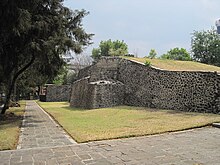
Benito Juárez, is a borough in the Mexico City. It is a largely residential area, located to the south of historic center of Mexico City, although there are pressures for areas to convert to commercial use. It was named after Benito Juárez, president in the 19th century.
Colegio Williams is a private school system in Mexico City, serving preschool through high school. It has three campuses: Campus Mixcoac in Mixcoac, Benito Juárez; Campus San Jerónimo in San Jerónimo Lídice, Magdalena Contreras, and Campus Ajusco in San Miguel Ajusco, Tlalpan. Its head office is in the Mixcoac campus.
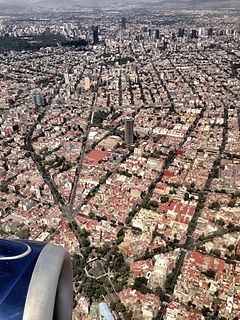
Colonia del Valle is a neighborhood in the Benito Juarez borough of Mexico City. It includes "...a great number of parks, vast and tree-lined streets, prestigious shopping malls, and some city landmarks...".

San Pedro de los Pinos is a station on Line 7 of the Mexico City Metro system. It is located in the Benito Juárez municipality of Mexico City, west of the city centre. In 2019, the station had an average ridership of 13,680 passengers per day.
Colonia Ampliación Asturias is a neighborhood in the Cuauhtémoc borough of Mexico City. It is located southeast of the historic center of Mexico City. It borders are marked by the following streets, to the north Eje Tres Sur or Avenida Calzada del Chabacano, Calzada de la Viga to the east, Calzada de San Antonio Abad to the west and Hernandez Davalos street to the south.

Ecobici is the bicycle sharing system launched in February 2010 by the government of Mexico City. Initially launched with 85 docking stations and 1,000 distinctive red and white liveried bicycles, the network then expanded by September 2013 to be at 276 stations with 4,000 bicycles, and as of April 2015, now has 444 stations with 6,000 bicycles.
Metrópoli Patriotismo is a shopping center at Av. Patriotismo 229, in the San Pedro de los Pinos neighborhood in Mexico City. It is anchored by a Cinemex multi-cinema, Sanborns, and a ONE hotel. The design was by Grupo Arquitech.

Colonia Nápoles is a colonia, is an officially recognized neighborhood in Benito Juárez borough, Mexico City, and one of the iconic Mid-Century neighborhoods of Mexico City along with Colonia Del Valle.

Mixcoac is an area of southern Mexico City which used to be a separate town and municipality within the Mexican Federal District until it was made part of Mexico City proper in 1928.
Escandón is one of the colonias of Mexico City that were founded at the beginning of the 19th century on crop terrains that were formerly part of the haciendas. This colony formed part of the Hacienda de la Condesa, being property of the family Escandón, who fractionated the terrains situated south of this. The colony is divided in two: Escandón I and Escandón II, because of its big extension. The first section is located from the Patriotismo Avenue and confines with the Tacubaya neighborhood; whereas the second section extends from the Viaducto Miguel Alemán and confines with the Condesa Neighborhood. Escandón II has greater economic and social success than its homologous.

Colonia Noche Buena is a neighborhood in Benito Juárez, Mexico City.
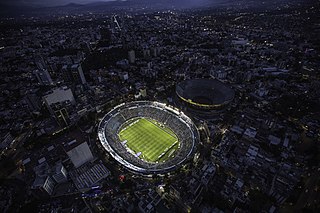
Ciudad de los Deportes is a neighborhood in Benito Juárez, Mexico City.
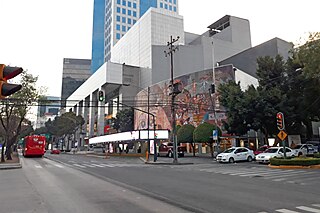
San José Insurgentes is a neighborhood located in southwest Mexico City.

Colonia Insurgentes Mixcoac, or simply Insurgentes Mixcoac, is a neighborhood located in Benito Juárez, Mexico City.
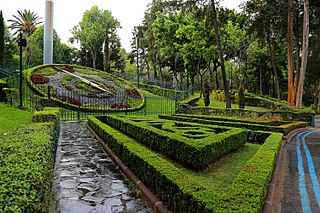
Colonia Extremadura Insurgentes, or simply Extremadura Insurgentes, is a neighborhood located in southwest Mexico City, famous for being home to Parque Hundido.
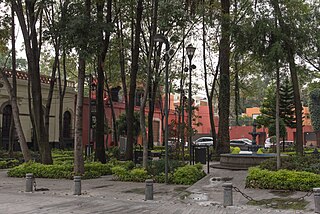
Colonia San Juan is a neighborhood in Benito Juárez, Mexico City.

Colonia Insurgentes San Borja is a neighborhood in Benito Juárez, Mexico City.

Colonia Florida is a neighborhood in Mexico City, located in the Álvaro Obregón borough.
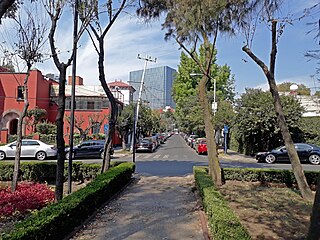
Guadalupe Inn is a colonia in Mexico City.


